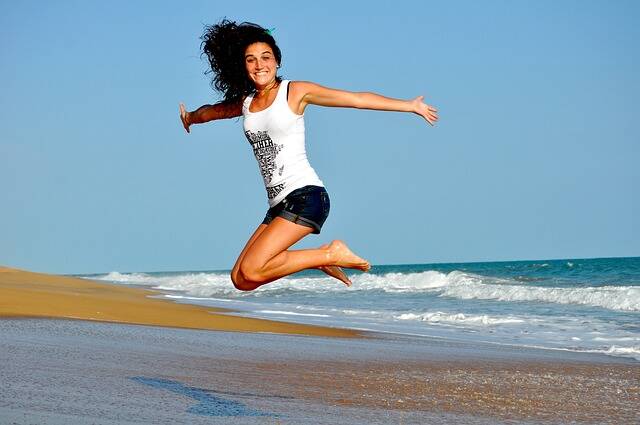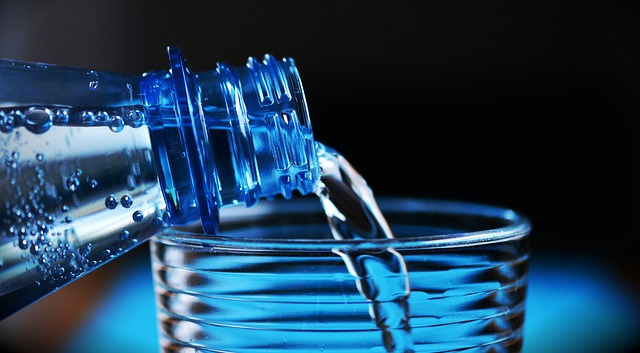5 tips: How to avoid problems and stay healthy in summer?

What can put our health at risk in summer? How to behave to stay healthy? There are countless possible causes of health risks even in the summer months. The risk of injuries is also increased due to increased physical activity. However, by following some guidelines, their influence can be eliminated. So how to stay healthy in summer?
Article content
We must not forget that summer is holiday time. Therefore, it is a period of increased risk of injury, especially for children and teenagers. However, there are other problems that can put different groups of people at risk. From the little ones to the others.
How should we behave to stay fit in summer?
This topic raises many questions. Those who have had an unpleasant experience do not need an answer. Not every pitfall can be avoided, but it should not be ignored.
1. Drinking regime
The phenomenon in the form of a drinking regime interests probably every person who cares about his own health.
How often, how much and what to actually drink to prevent dehydration of the organism? The simple thing would be to drink when we are thirsty. Drink enough to drive away thirst and what we like.
The human body is 75% water, the rest is solids.
It all depends on the environment we are in. That is, the temperature of the environment. It is not always warm in the summer. We stay in air-conditioned and cold rooms. Dehydration can also occur in the cold months and in cold environments. It is due to the diuretic effect of the cold. Then fluids are lost from the body through frequent urination.
Water is needed to nourish the body and to remove waste substances. In summer, the body loses many minerals also through sweating. Therefore, when we talk about drinking, the best drink is pure mineral water and preferably still water. Artificial beverages introduce chemicals into the body. The body has to detoxify itself and eventually eliminate them from the body.
This is done with water, which acts as a solvent for these substances. The body is thus unnecessarily burdened.
The same applies to coffee or tea, which contain caffeine and theine, substances with a diuretic, diuretic effect.
Dehydration can manifest itself as a lack of energy or easy fatigability.
Lack of water in the body causes increased production of antidiuretic, or anti-diuretic hormone. The body tries to retain as much water as possible. This results in constriction of blood vessels and an increase in blood pressure.
Alcohol, on the other hand, decreases the production of this hormone. This means that it is another unsuitable drink to follow a drinking regime. Its regular consumption, even in small quantities, exacerbates dehydration.
One glass of alcohol or coffee should be replaced by three glasses of pure water.
Symptoms of dehydration vary
From psychological to cardiovascular.
The most common symptoms are listed in the table below
| Group of symptoms | Symptoms themselves |
| Mental |
|
| Neurological |
|
| Cardiovascular |
|
| Gastrointestinal disorders |
|
| Other |
|
Breathing at rest, the body loses about 700 ml of water. During sporting activity, this can be up to 5 times more. Sweating is about 500 ml and in summer heat up to 1000 ml of water. Urinating under normal conditions, this loss is about 750 ml.
However, drinking alcohol and coffee or tea increases this amount.
Under normal circumstances, during warm weather or as a result of an hour of sporting activity, the loss of body water can be up to 6 litres.
The table below shows the daily water requirements
The values are valid under normal conditions. Without much physical exertion, with an air temperature of around 20 °C and a humidity of around 60 to 80%.
The table shows the daily water requirement by age
| Age | Water requirement for 1 day |
| Infant up to 1 year | 120 to 180 ml per 1 kg body weight |
| 1 to 6 years | 100 to 125 ml per 1 kg body weight |
| 6 to 12 years | 70 to 100 ml per 1 kg body weight |
| children over 12 years of age | 40 to 60 ml per 1 kg body weight |
| adult | 20 to 45 ml per 1 kg body weight |
The table shows that an adult weighing approximately 70 kg needs between 1.4 and 3.15 litres of fluid per day. However, with regard to health, the lower limit is insufficient. Therefore, 2.5 to 3 litres of water per day is recommended.

In summary, the following applies:
Drink mineral, non-carbonated water or herbal teas. Of course, unsweetened. The drink must not be cold. It is best lukewarm.
Since we sleep at night and can't drink, it's important to drink first thing in the morning. At least two cups of water. It's not necessary to drink them all at once. During the day, replenish fluids as needed, but don't wait for the feeling of thirst. That's already a warning sign and even disappears in old people.
Best at regular intervals.
1 glass of water (3 dcl) per hour.
Read more about dehydration in our article.
2. Sunbathing
Exposing the skin to the sun to make it darker is a summer ritual for most people. It has its positive effects on the health of the body. Here too, it must not be overdone.
Sunbathing is an activity during which the skin is exposed to ultraviolet radiation.
Excessive sunbathing can cause mild burns. It can cause skin cancer. The greatest risk is during the midday hours, when the sun is highest in the sky and its rays are more perpendicular to the earth's surface.
A positive effect of sun exposure is the production of vitamin D. It's more of a hormone, because the body makes it itself. It's very important for strengthening the immune system. Even more effective than vitamin C. It has a positive effect on bone density and dental health.
It even has an anti-cancer effect and is effective in some skin diseases.
So how can we ensure that we only benefit from the beneficial effects of sunbathing?
Basically, you should not sunbathe at all between 11 a.m. and 3 p.m. The initial 10 to 15 minutes of summer sunbathing without sunscreen will ensure that you get enough vitamin D. After that, you should apply a sunscreen with a factor of 15 or higher to protect your skin.
Sunbathing in this way at least 2 times a week will produce enough vitamin D. There is enough to last about 2 to 4 months. However, if you are already more tanned or darker skinned, your body will produce less of this vitamin.
This is because more pigment in their skin will create a filter and let in less sunlight.
Read more about tanning in our magazine.
3. Watch out for overheating or sunstroke
These are usually caused by excessive environmental temperatures. In addition, dehydration is also a major contributor.
For this reason, they can often occur with excessive physical activity. The sports-loving public in particular must beware. This is doubly true when it comes to drinking.
Overheating occurs when the body is unable to cool itself due to high outside temperatures or increased internal heat production. This is usually caused by dehydration. The core body temperature then rises above normal values.
Heatstroke is actually overheating of the body with failure of thermoregulation. It is also associated with failure of important body organs. Heatstroke can be exertional or classic.
Exertional heat occurs as a result of great physical exertion.
Classical is due to exposure to high outdoor temperatures.
The objective signs of overheating are:
- weakness
- Vomiting
- sweating
- rapid pulse
- increased blood pressure
- temperature usually no more than 41 °C
Symptoms of heat stroke:
- temperature usually more than 41 °C
- increased pulse
- convulsions and disturbances of consciousness may be present
- hallucinations
- dry and hot skin
- rapid breathing
- decreased urine output to complete absence of urination

This shows how important it is to maintain a drinking regime in warm weather. It is important to keep cool by at least staying in shaded areas. This is especially important for people with a lot of physical activity or athletes.
Unless it is unavoidable, it is better not to expose yourself to high outdoor temperatures.
Read more about heatstroke in our article.
4. Watch out for injuries
The summer period is one of the riskiest in terms of injuries. As it is the summer holiday period, a group of children and young people in particular are at risk.
It's a period of warmth, so it draws you to the water to freshen up a bit. Avoiding trouble means not overestimating your abilities.
Swim only as much as you can and where you are able. Swimming in open water without the supervision of a lifeguard is not recommended for weaker swimmers. Also, swimming in rivers where there are different currents is often not suitable even for the more able. If anything, it is better to swim along the shore. In the event of any problems, it is easier to get out of the water.
Of course, it is recommended to cool off in pools with professional supervision. However, even here one should follow the instructions and not overestimate one's strength.
Jumping into the water is also dangerous, especially into waters that you are not familiar with. If you misjudge the depth, there is a risk of spinal and head injuries.
Injury is defined as sudden permanent or temporary damage to the body by mechanical, chemical or biological influences.
During the summer there are many activities with an increased risk of injuries. They are usually initiated mainly by overestimating one's abilities or by fatigue. Of course, they are not always caused by one's own fault.
In any case, it is better not to underestimate the danger. It is better to reduce the risk. For example, when cycling, wear a protective helmet. Move in terrain that we know. Listen to your body and do not overestimate your strength during sporting activities. Do not swim in unfamiliar waters and do not jump into water when you do not know the depth.
Risky activities for children during the summer
Children are a high-risk group. Here are the activities that are most risky for children during the summer.
Inflatable attractions, although it may not seem like it, belong to this group. In 2010, statistics in the U.S. yielded an average of 31 injuries per day. These were mainly caused by jumping, falling next to the attraction, or colliding with another person. As a precaution, it is recommended to supervise or try to avoid multiple children playing on the attraction. It is important to follow the manufacturer's or operator's instructions.
Swimming pools are often the only way to refresh oneself. However, nothing should be underestimated. Children are also at risk in a children's pool with a water depth of less than 5 cm. The most important prevention is knowledge of swimming. Children should receive professional swimming training.
The presence of an adult is a must when children are in the pool. Efforts should be made to prevent accidental falls into the pool.
It is not recommended to leave children's pools filled with water after swimming.
The surroundings of the house and garden also pose a great risk to children. Especially when no adults are around. Children should be prevented from coming into contact with work machinery or tools.
Bicycles or other self-propelled vehicles are also very popular with children during the summer. In Sweden, bicycle accidents account for up to 60% of the youngest population. The basic rule should be to wear a helmet. Even according to the law. A helmet reduces the risk of head injuries by up to 85%.
The presence of an adult is a necessity and moving off roads with public transport is a matter of course.
Activities on roller skates or skateboards are popular with younger and older people alike. Space for undisturbed activity is important. A designated area away from contact with vehicles or other traffic is best. Wearing a helmet and other protective equipment is also a necessity for this activity.
For example, knee and elbow pads.
5. Transition from heat to cold
Most often caused by the transition to cold water or air-conditioning of chilled areas. Whether in public buildings or transport vehicles.
However, air conditioning is not always used correctly. This can cause significant health problems. Upper respiratory tract infections, hypothermia and even thermal shock can occur.
Air conditioning dries out the air and thus the respiratory tract. It is advisable to use humidifiers together with air conditioning.
The temperature difference between the outside and inside environment should be no more than 5-7 °C.
When moving from a warm environment to cool water, an acclimatisation refreshment should be taken first. At the swimming pool, under the shower before entering the pool. If a shower is not within reach, the water should be entered slowly, gradually cooling the body.
More useful information:
Summer, sun, heat, water, our health and injuries, illnesses or other typical summer problems










